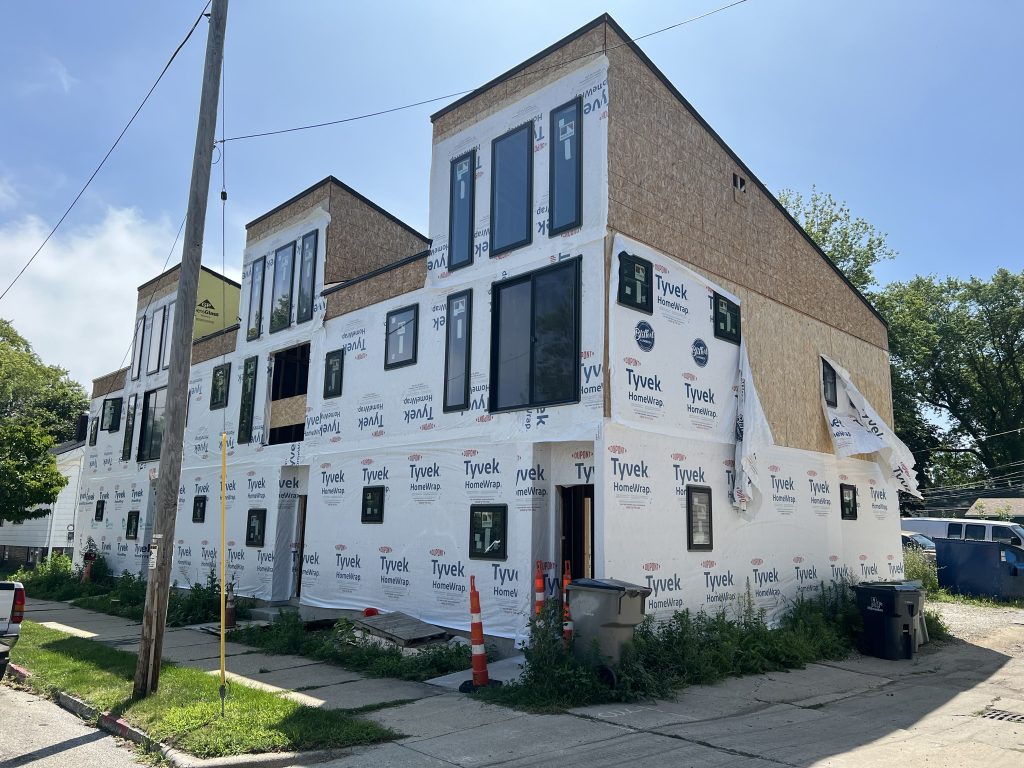Your Input Sought On How To Get To One Million Residents
Public meetings will seek suggestions on how to grow city and achieve mayor's vision.
Mayor Cavalier Johnson isn’t backing away from his commitment to grow the city of Milwaukee to one million residents, an increase of more than 400,000.
“Yes, it’s ambitious, but let’s be ambitious,” said Johnson during his State of the City speech Monday afternoon.
Twenty-four hours later, the Department of City Development (DCD) will reveal just how ambitious it’s willing to be.
DCD is hosting the first public meeting on its Growing MKE plan, a proposal to adjust the city’s zoning code and city plan to accommodate growth.
A virtual meeting is being held Tuesday night from 6 p.m. to 7 p.m., with three open-house-style public meetings to follow in the next two months.
“We aren’t starting from scratch,” says the project webpage. “Growing MKE will advance the goals and recommendations from several recent City of Milwaukee planning efforts. These plans were shaped through stakeholder and resident input and include recommendations to increase housing supply within the city of Milwaukee.”
First initiated in 2022, the process could result in zoning changes to increase housing along key transit corridors and simplifying permitting for things like accessory dwelling units (carriage units).
The zoning code was last substantially updated in 2002 under Mayor John Norquist, but recent planning efforts have identified potential areas for improvement.
“A lot of those plans have made recommendations like adding housing near transit, how we regulate parking, accessory dwelling units, things like that,” said planning manager Sam Leichtling in July 2022.
A report submitted to the council in 2022 says changes could allow more home-based businesses, increase housing options and increase affordability by allowing a greater number of housing styles and adjusting parking requirements.
Why seek such ambitious growth? “It’s a vision, and a goal that allows us to think big. Reaching one-million people will add new energy and new opportunity. It would redefine Milwaukee in the eyes of people from coast to coast, elevating all the best things about our city,” said Johnson on Monday.
Milwaukee’s population peaked at 741,324 in 1960, during an era when household sizes were much larger. Much of the new development that has occurred Downtown and in other neighborhoods has been offset by declining household sizes and population declines in central city neighborhoods.
The council approved $100,000 for a consultant to support the process. The city’s long-range planning manager is Tanya Fonseca and Amy Oeth serves as the project manager.
Individuals can register for Tuesday’s virtual meeting on the DCD website.
The scheduled open houses, with more promised, are to occur on the following Mondays from 5:30 p.m. to 7 p.m.:
- July 10 – Villard Street Library – 5190 N. 35th St.
- Aug. 14 – Mitchell Street Library – 906 W. Historic Mitchell St.
- Aug. 28 – Washington Park Library – 2121 N. Sherman Blvd.
The Common Council must adopt the final plan, both as an amendment to the citywide policy plan and as modifications to the zoning code.
If you think stories like this are important, become a member of Urban Milwaukee and help support real, independent journalism. Plus you get some cool added benefits.
More about the Growing MKE proposal
- City Hall: Committee Waters Down Proposed ‘Granny Flat’ Plan - Jeramey Jannene - Jun 17th, 2025
- Madison Pursuing Its Own Zoning Reform Similar To ‘Growing MKE’ - Sarah Lehr - Jun 12th, 2025
- ‘Growing MKE’ Proposal Picks Up Key Endorsement - Jeramey Jannene - Jun 2nd, 2025
- City Revises Its ‘Growing MKE’ Plan, Including Changing The Name - Jeramey Jannene - May 1st, 2025
- Milwaukee Delays Legalizing Carriage Houses - Jeramey Jannene - Apr 22nd, 2025
- Committee Overturns Plan Commission, Recommends ‘Missing Middle’ Housing - Jeramey Jannene - Apr 17th, 2025
- City Hall: Council Committee Backs Return of Granny Flats - Jeramey Jannene - Apr 16th, 2025
- City Hall: Plan Commission Backs Carriage Homes, Spikes ‘Missing Middle’ Housing - Jeramey Jannene - Apr 7th, 2025
- Op Ed: Milwaukee Needs Bold Leadership to Solve the Housing Crisis - Montavius Jones and Alex Rodriguez - Jan 3rd, 2025
- HUD Launches $100 Million Competitive Home Fund in Milwaukee - Jeramey Jannene - Aug 14th, 2024
Read more about Growing MKE proposal here






















Shorten winter. Build an efficient, reasonably priced public transport system. Ban small “shareable” plate restaurants.
Get rid of racist zoning ordinances and get rid of any remaining racial covenants. This requires committing to the neighborhood mapping project at UWM.
Improve opportunities for jobs, safe housing, green space in our inner city neighborhood. Fully support Habitat initiatives in neighborhoods such as Harambee, Metcalfe, Midtown, and King Park.
We need to focus on drawing people outstate and out-of-state to Milwaukee. What means is quality amenities such as schools and public transportation. Finally, setting up a regional transit system would go along way to achieving that. Unfortunately, we have a legislature that despises Milwaukee (the state’s economic engine) and is not interested in improving either public education or transportation.